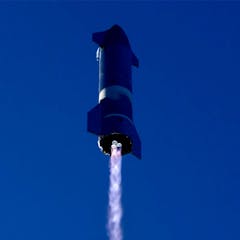
Articles on Space exploration
Displaying 101 - 120 of 291 articles

The Ingenuity is a drone-like helicopter that completed its first flight on Mars. This achievement reflects a new horizon for space exploration, as new places are discovered and studied.

High levels of cognitive performance and effective teamwork are crucial to long-duration space missions.

Perseverance follows in the tracks of Curiosity. The latter’s touchdown on Martian soil in 2012 marked the first successful use of several pioneering space technologies.

If China succeeds, it will be the first country ever to visit and land on Mars on its first try.

India has already managed what China has not.

SpaceX is due to test fly its Starship in the coming days.

Artificial intelligence can help us venture further in space.

India may land on the Moon this coming year, while Nasa will launch its new, powerful rocket farther into space than any other human rated spacecraft.

Starship’s groundbreaking design will help it land safely on Mars one day.

Companies and space agencies alike will have to compete for very few useful sites on the Moon.

It is becoming increasingly clear that there is plenty of brine on Mars.

Researchers have spotted millions of galaxies in the most detailed radio survey of the southern sky ever conducted. It has smashed previous records for survey speed.

A change of government in the USA means less risk of ‘space war’ and more hope for peaceful cooperation.

Some people are nervous about China’s growing capabilities when it comes to space exploration.

How solar power stations in orbit could become a reality in the coming decades.

SpaceX’s satellites will populate the night sky, affecting how we observe the stars. And this is just the beginning of private satellite mega-constellations.

With a new president in the White House and NASA’s chief administrator resigning we can expect changes to space policy.

After two decades as a home to astronauts, the International Space Station still has plenty to teach us about how humans can live away from Earth.

Bennu will tell us about our own origins as much as about the origin of asteroid Bennu.

Considering what we know about the key ingredients for life’s formation on Earth, here are three explanations for how this process may have occurred on our sister planet.





